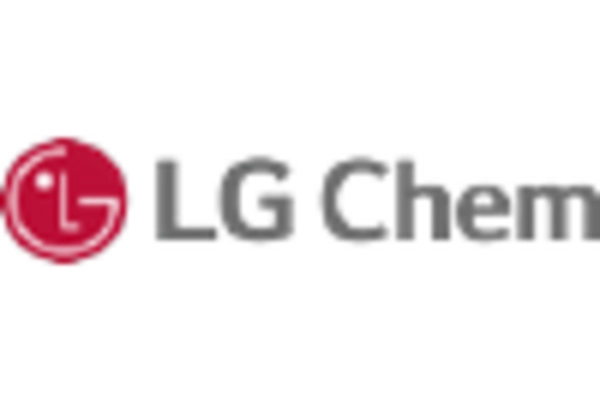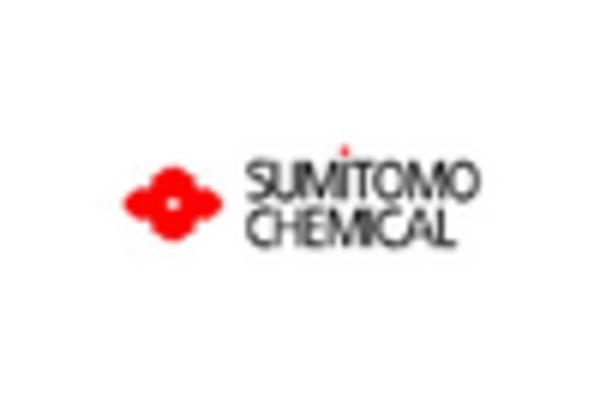Government Initiatives and Funding
Government initiatives aimed at promoting advanced materials and technologies are playing a crucial role in the organic semiconductor market. In the US, various funding programs and grants are being allocated to support research and development in organic electronics. For instance, the Department of Energy has invested in projects that focus on enhancing the efficiency and performance of organic semiconductors. Such initiatives not only foster innovation but also encourage collaboration between academia and industry, which is essential for the growth of the organic semiconductor market. The financial backing from government entities is expected to stimulate advancements in manufacturing processes and material development, thereby enhancing the competitiveness of organic semiconductors in the broader electronics market.
Growing Consumer Electronics Market
The organic semiconductor market is poised to benefit from the expanding consumer electronics market, which is characterized by a rising demand for innovative and energy-efficient products. As consumers increasingly prioritize sustainability and performance, manufacturers are turning to organic semiconductors to meet these expectations. The consumer electronics market in the US is projected to grow at a CAGR of around 5% over the next few years, with a notable increase in the adoption of smart devices and IoT applications. This growth is likely to create a favorable environment for the organic semiconductor market, as these materials are well-suited for applications in smart appliances, wearables, and other electronic devices. The integration of organic semiconductors into consumer electronics is expected to enhance product functionality and energy efficiency.
Advancements in Display Technologies
The organic semiconductor market is witnessing advancements in display technologies, particularly in organic light-emitting diodes (OLEDs). OLEDs are increasingly being adopted in smartphones, televisions, and other display devices due to their superior image quality and energy efficiency. The market for OLED displays is projected to reach approximately $30 billion by 2025, reflecting a strong demand for high-performance display solutions. This growth is likely to drive the organic semiconductor market, as the materials used in OLEDs are primarily organic semiconductors. Furthermore, the continuous innovation in display technologies, such as the development of transparent and flexible OLEDs, is expected to create new opportunities for the organic semiconductor market, enhancing its relevance in the electronics industry.
Rising Demand for Flexible Electronics
The organic semiconductor market is experiencing a notable surge in demand for flexible electronics, driven by the increasing adoption of wearable devices and flexible displays. As consumers seek lightweight and portable solutions, manufacturers are focusing on developing organic semiconductors that can be integrated into various applications. The market for flexible electronics is projected to reach approximately $50 billion by 2026, indicating a robust growth trajectory. This trend is likely to propel the organic semiconductor market, as these materials offer unique properties such as bendability and lightweight characteristics. Furthermore, the ability to produce organic semiconductors using low-cost printing techniques enhances their appeal, potentially leading to wider adoption across multiple sectors, including healthcare and consumer electronics.
Increased Investment in Renewable Energy
The organic semiconductor market is likely to benefit from the growing investment in renewable energy technologies. As the US transitions towards sustainable energy sources, organic photovoltaics (OPVs) are emerging as a viable solution for solar energy generation. OPVs, which utilize organic semiconductors, offer advantages such as lightweight, flexibility, and lower production costs compared to traditional silicon-based solar cells. The market for organic photovoltaics is anticipated to grow significantly, with estimates suggesting a compound annual growth rate (CAGR) of around 20% over the next five years. This trend indicates a promising future for the organic semiconductor market, as the demand for efficient and cost-effective solar solutions continues to rise.















Leave a Comment